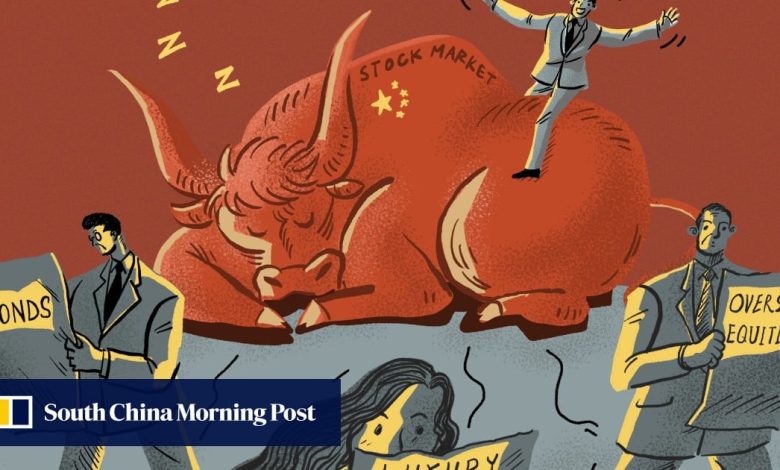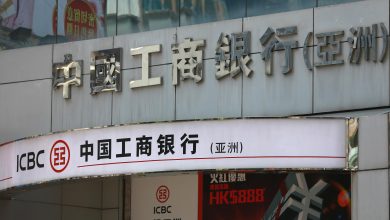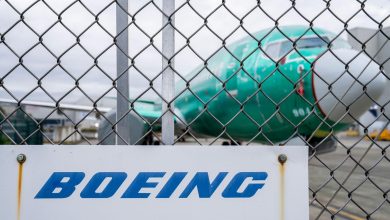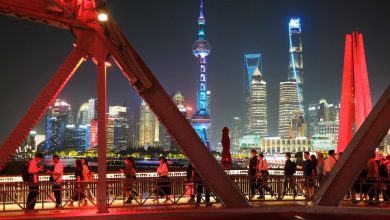China’s stock woes: funds shun equities for bonds, ETFs, luxury homes in downbeat market


This is a setback for Wu Qing, the chairman of China Securities Regulatory Commission (CSRC), who rolled out a flurry of measures since he took over in February, from pledges to boost the quality of listed companies to crackdowns on short selling. After a brief rebound spurred by such state support, investors have been fleeing amid worries about the prospects of economic growth and corporate earnings.
“The Chinese markets remain very frustrating for investors,” said Gary Dugan, CEO of The Global CIO Office in Dubai, which provides services to family offices, wealth managers and ultra-high-net-worth individuals. “Investors are looking for tangible and sizeable measures from the government. The market is in need of policies that [can] deliver a boost to near term growth. If an effective stimulus is delivered to the economy, the upside in the market could be sizeable.”
Instead, China’s central bank made cuts to the policy interest rate and the longer-term loan prime rate following the two meetings, underwhelming stock traders and triggering a flight to haven trades.
“While the Politburo’s communique acknowledged economic lethargy and promised measures to address the weakness, there were no new specific policies,” said Ronald Temple, chief market strategist at Lazard Asset Management. “The Politburo highlighted the need to resolve housing issues, but it offered no new meaningful measures to absorb the excess supply of housing units or to stimulate consumption in the broader economy.”
Temple said he was withdrawing the call he made earlier this year about China’s growth bottoming, adding that “China will likely be a drag on global growth again in 2024 and 2025”.
The CSI 300 Index is now about 10 per cent off the high for the year set on May 20, and the combined daily trading values on the Shanghai and Shenzhen exchanges fell to 472.9 billion yuan (US$66.1 billion) last week. It was the lowest since May 2020 and considerably smaller than the daily average of 589 billion yuan this month and 790 billion yuan this year.
Even some of the most extreme measures taken by the CSRC have failed to revive confidence. A month ago, the watchdog suspended the securities relending business by state-backed margin-trading firm China Securities Finance, which loans stocks to short sellers. That has virtually decimated short selling, plunging outstanding value to a more than four-year low as short-sellers rushed to unwind trades to skirt the clampdown.
China’s opaque reshuffling of high-ranking finance officials and the ongoing clean-up of the securities industry have also put investors on edge, leaving them guessing about the policy intentions.
To be sure, some optimists argue that the downside risk is limited and stocks are attractive relative to bonds, which are fetching record-low yields.
“In terms of valuation, Hong Kong-China equities are currently trading at the lower end of their historical range, which could represent attractive entry points for longer term investors,” said William Fong, head of Hong Kong China equities at Baring Asset Management in Hong Kong. “As the economy gradually normalises, we are finding attractively priced, strong structural growth opportunities from a bottom-up perspective.”
Stocks linked to infrastructure, healthcare and technology may outperform as they benefit from the nation’s strategies to pursue sustainable growth, tech innovation and environmental awareness, he said.
UBS Group strategist Meng Lei said China’s insurance companies, which sit on total assets of more than 30 trillion yuan, would gradually switch to stocks, as the industry’s investment returns are set to be squeezed by rapidly falling bond yields. The yield on China’s benchmark 10-year government bond fell to an all-time low of 2.124 per cent on August 2.
“The inflows from insurance companies [to stocks] won’t take place overnight,” said Meng. “They will add positions gradually depending on the changes in fundamentals and earnings recovery.”
The CSI 300 Index is currently valued at 11.6 times estimated earnings for this year, compared with a multiple of 23.2 for the S&P 500 Index and 21.2 for the Nikkei 225, according to Bloomberg data.
Despite the edge, investors remain vigilant against falling into the so-called valuation trap – cheaper valuations offset by lower corporate earnings.
For now, investors are fixated on asset classes other than stocks. Some are betting on the extension of a record-breaking rally in the bond market, even as the central bank repeatedly warns of the potential risk of low yields that could lead to huge investment losses should growth pick up. They argue that the deflationary trend in producer prices will prompt further interest-rate cuts to bolster demand for debt products. China’s factory-gate prices dropped for a 22nd month in July, while consumer inflation remained below 1 per cent for the 17th month in a row.
An ETF linked to the Nikkei 225 run by China Asset Management at one point traded at a record 21 per cent premium to its net-asset value this year, while the premium in the firm’s ETF tracking the S&P 500 Index touched an all-time high of 18 per cent, according to Bloomberg data, underscoring robust demand in the secondary market.
Besides these options, China’s wealthy investors have set their eyes on a niche segment in the country’s beleaguered property market, parking money in luxury homes in tier-one cities on expectations that limited supply will protect their wealth.
“If you really want to find a safe harbour for capital now, luxury homes in big cities such as Shanghai should be the best choice,” said Yan Yuejin, vice-president of E-house China Real Estate Research and Development Institute in Shanghai. “No matter how home prices swing, these premium properties are rare and can meet the demand for preserving and boosting wealth.”
For now, overseas investors have taken a back seat as signs of a stock rally remain elusive.
“No one has China and Hong Kong [stocks] on their radar now,” said Brook McConnell, president at South Ocean Management.
“There’s slow improvement, just not enough to get anyone excited yet. The patient is still lying still on the bed. The markets need more from Beijing.”





